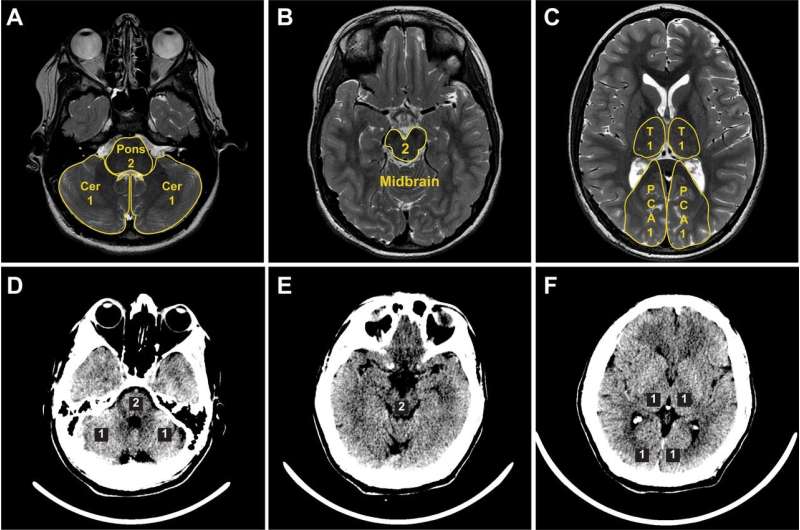This article has been reviewed according to Science X's editorial process and policies. Editors have highlighted the following attributes while ensuring the content's credibility:
fact-checked
peer-reviewed publication
proofread
Multiple randomized trials prove more stroke patients can benefit from thrombectomy

Access to thrombectomy should be expanded to include patients who experience basilar artery occlusion (BAO), a deadly type of emergent large vessel occlusion stroke, urges the Society of NeuroInterventional Surgery (SNIS).
The scientific association, which represents more than 1,200 neurointerventionalists globally, issued an update to its standards and guidelines in the Journal of NeuroInterventional Surgery (JNIS), citing randomized trials proving endovascular thrombectomy (EVT) can be a lifesaving treatment for BAOs. Currently, 68% of patients with BAOs end up dying or having a lifetime of disability, making it one of the most dreaded types of stroke.
Through a structured literature review and analysis, "Focused update to guidelines for endovascular therapy for emergent large vessel occlusion: basilar artery occlusion patients" cites the results of two recent positive randomized EVT trials—ATTENTION (Endovascular Treatment for Acute Basilar Artery Occlusion) and BAOCHE (Basilar Artery Occlusion Chinese Endovascular Trial).
Adult patients ages 18 to 89 who scored high on common stroke severity scales (meaning their symptoms were severe versus mild) had significantly lower rates of mortality at 90 days post treatment compared to those who were treated with medical therapy alone.
"These two new trials demonstrate without ambiguity that EVT is not only effective for adult BAO patients within 0–12 and 6–24 hours of symptom onset but proves far better patient outcomes compared to medical therapy," said Steven Hetts, MD, SNIS Standards Committee Chair.
"Considering the potentially devastating consequences of a BAO stroke, including death or locked-in syndrome, the impact of offering improved treatment options is of critical importance."
The recommendations were made by consensus of the writing committee, with additional input from the full SNIS Standards and Guidelines Committee and the SNIS Board of Directors. Thrombectomy treatment of patients with a vertebral artery occlusion or BAO with mild symptoms should be based on individual situations that balance the risks and benefits of thrombectomy compared with medical therapy.
Mahesh Jayaraman, MD, Professor and Chair of Diagnostic Imaging at Brown University, Director of the Neurovascular Center at Rhode Island Hospital and President of SNIS, believes that the update to SNIS standards and guidelines will lead to more thrombectomy transfers to appropriate centers, and most importantly, a cumulative reduction in the degree of stroke disability and burden to patients and their loved ones.
"With each study that proves more patients can benefit from minimally invasive neurointerventional procedures, members of SNIS and the field are reminded of why they do the work they do," said Dr. Jayaraman.
"These findings further support the notion that no matter where they live or the type of stroke they experience, every patient deserves triage and transport to appropriate care so they are given a chance to survive and thrive."
More information: Jeremy Josef Heit et al, Focused update to guidelines for endovascular therapy for emergent large vessel occlusion: basilar artery occlusion patients, Journal of NeuroInterventional Surgery (2024). DOI: 10.1136/jnis-2024-021705




















